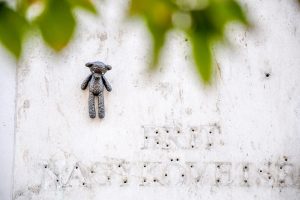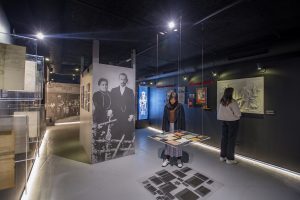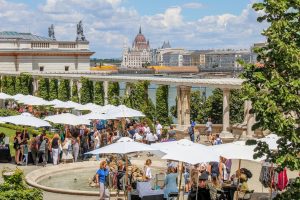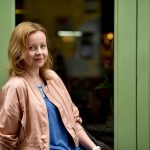Between 4 and 20 October 2019, CAFe Budapest Contemporary Arts Festival fascinates the capital for the 28th time this year. The 17-day event series, organized by Müpa in cooperation with Budapest Festival and Tourism Centre, is back to put contemporary artists in the spotlight: contemporary music, pop and jazz concerts, dance and theatre performances, as well as operas and exhibitions are all part of the repertoire. Just like in previous years, Müpa, Liszt Academy, BMC, Akvárium Klub, A38 Ship, Várkert Bazár, Pesti Vigaó, Uránia National Film Theatre and Trafó Contemporary House of Arts will give home to the programs, even though visitors may bump into the festival at several exciting public spaces. We had a talk with Janina Szomolányi, Head of Festival Office at Müpa, on this year’s exceptional programs.
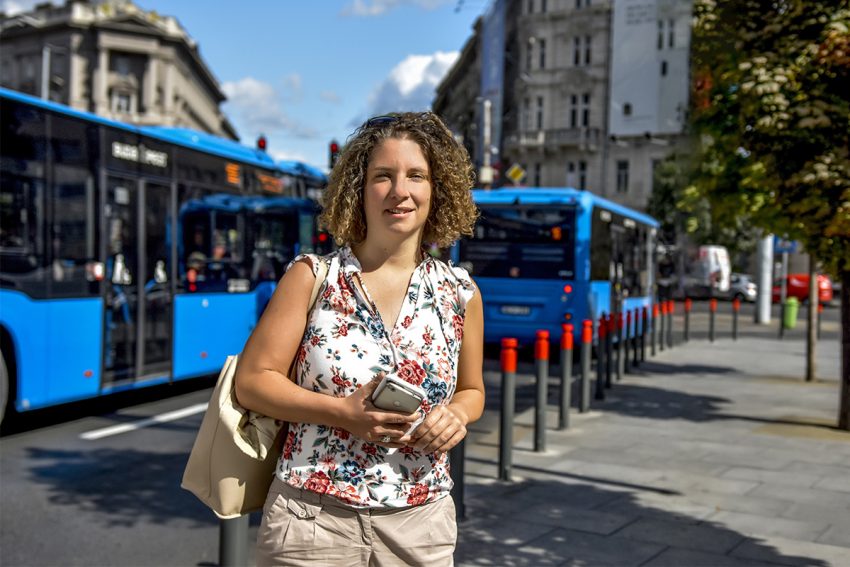
When and for what reason was the first CAFe Budapest organized?
CAFe Budapest Contemporary Arts Festival is the offspring of Budapest Art Weeks, which started in 1991, and Budapest Autumn Festival that evolved from the former. Our goal, the point of this transformation was to create an urban arts festival, where not only music dominates, but many exciting genres are represented and public spaces turn into festival venues. Our mission hasn’t changed since: we are looking for progressive, contemporary programs, as well as local and foreign artists to be introduced in Hungary, and we also thrive to bring the concept of contemporary closer to people. Street art performances are organized to reach this goal, but our greatest challenge this year is The Fisherman’s Bastion Is Moving House! project that will reveal to what extent we can engage locals, and whether we, festival goers can build a 16-metre installation from cardboard boxes in the middle of the city.
Olivier Grossetête, an internationally recognized, Marseilles-based artist, is one of the most eccentric figures of public and community art. He has built his monumental cardboard buildings on five continents. Millions of people have taken part in building up and knocking down close to 200 instalments made of cardboard boxes. Spontaneously gathering passersby contribute to the realization of the imposing buildings which form a tower, temple or mythical castle. The constructions are sometimes 25-metre high, consist of 1500 cardboard pieces, and weigh 1.5 tons.
What do we mean by contemporary art today?
Everything that happens today, everything that is important to us right here, right now. An art work is often inspired by a classical piece of art, but if a progressive director/choreographer brings new life to this work, and his/her approach and form of expression is up to date, we can call it contemporary. For example, János Feledi and his dancers put the story of Electra into today’s setting, which is going to be thrilling.

Which art forms are highlighted this year?
This season puts special emphasis on public spaces: we co-organize (D)OPEN Your Move mini festival – with an exciting fusion of urban, street, and contemporary dance in focus – with Trafó, the dancers of Willany Leó will improvise at busy public spaces, an installation will be set up outdoors close to Madách tér, and Grossetête’s cardboard box project will attract visitors to Erzsébet tér. In addition, we have some gripping puppet shows to mark, but our music line-up is also fascinating with both classical and pop music programs. You can’t stress Péter Eötvös’ Angels in America opera enough, but Klangforum Wien is also worth mentioning as they are considered one of the most famous Austrian formations that specializes in contemporary music.
The festival lasts 17 days. How many programs are included?
We are happy to welcome visitors with more than 150 programs at 40 different venues.
Which program has a special place in your heart?
The already mentioned The Fisherman’s Bastion Is Moving House! project and the 3-day Budapest Ritmo music festival that will attract world music lovers to Akvárium. To contrast this intensive, invigorating happening, I have to mention another favourite, Margó Literary Festival and Book Fair that gives us opportunity to get immersed in talks and books. However, Margó also boasts some special music events.
Compared to the previous years, are there any changes worth mentioning? What posed the biggest challenge this year?
We try to see every festival as the very first one of its own kind, as we find it extremely important not to become indifferent towards our job. The greatest challenge this year is probably our dependency on the involvement of volunteers and city dwellers, which is essential for the French cardboard box project on 12 October. It is going to be a whole new experience for us too.
Photo by Kriszti Németh (Egy jó kép rólad)
